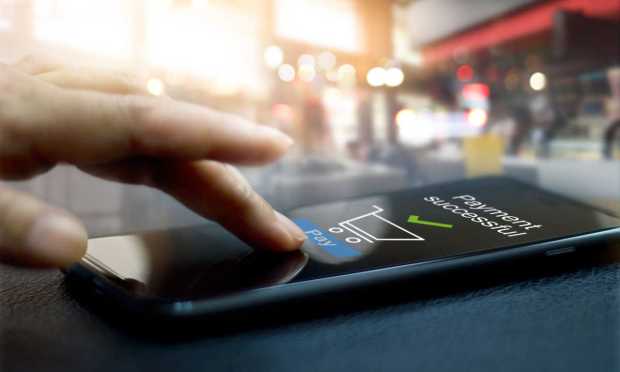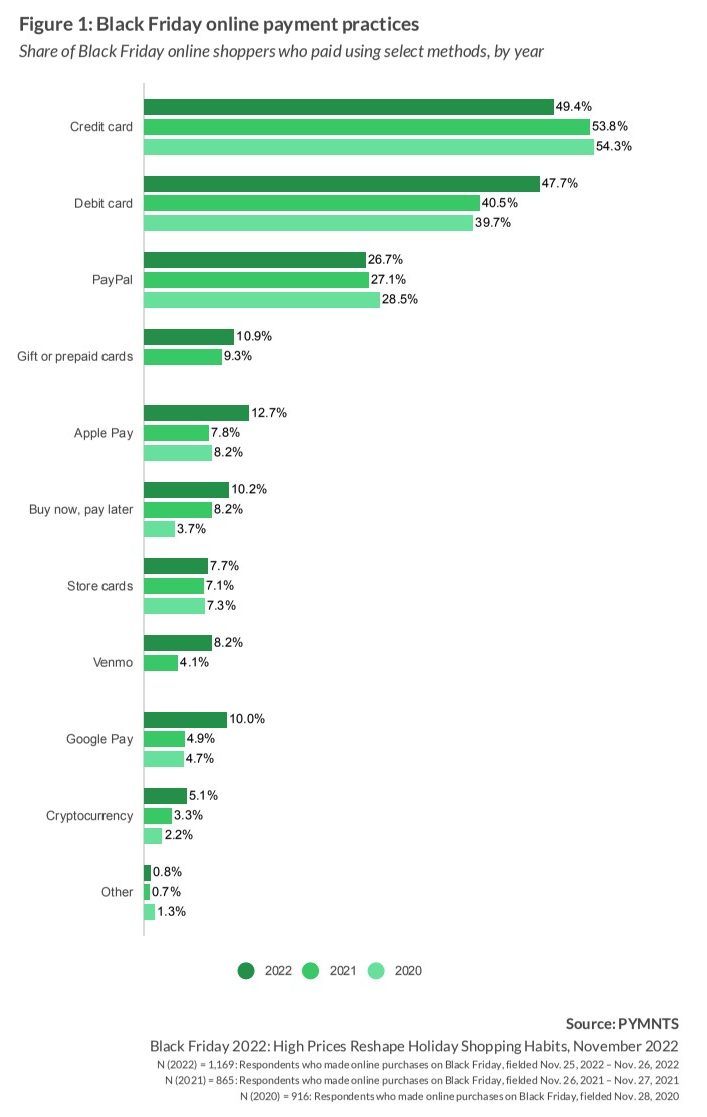Digital and Mobile Wallet Payments Brighten a Gloomy Black Friday

Two-thirds of American shoppers say they’re spending less on their wants than last year.
Inflation is dampening holiday shopping budgets, both worldwide and across the United States. As the domestic cost of goods and services in October hovered at 7.7% higher than last year, many shoppers are trimming their lists, passing up time-sensitive sales or skipping presents altogether.
A silver lining for retailers this holiday season is the slight uptick in total number of consumers spending. Per a November PYMNTS report, “Black Friday 2022: High Prices Reshape Holiday Shopping Habits,” 67% of holiday shoppers, representing 136.4 million individuals, made at least one holiday purchase on Black Friday 2022 — 3% more than in 2021.
Black Friday also saw a rise in digital payment use compared to last year:
Digging deeper into the data, the most significant growth seen during this Black Friday was in digital wallet usage — both online and in store.
The increase in brick-and-mortar usage may be attributed to a boost in physical traffic compared to last year, when pandemic-related lockdowns were still easing.
This surge of Americans using alternate payment methods for Black Friday purchases coincides with a 9% rise in digital wallet use for in-store purchases globally, per PYMNTS’ “How the World Does Digital.”
The September report compiled 15,000 consumer insights across 11 countries, using the ConnectedEconomy™ Index to offer an overview of the current state of the global digital transformation.
As mobile wallets become more widely accepted by retailers and merchants, PYMNTS has found that consumers using digital methods for one activity are more likely to use them for other activities in adjacent sectors, further connecting the digital economy. For instance, consumers using digital payments for travel may also be more prone to use them for meal delivery services, like Uber Eats or Just Eat Takeaway. This interconnectedness fosters greater digital engagement overall.
Digital and mobile wallets may not yet be used interchangeably with cash or physical credit and debit cards, but change seems to be coming. Their slow-but-steady gain in market share suggests that consumers (especially millennials) are seeking payment methods that simplify their shopping experience.
Even as Black Friday revenue dipped year over year, the increase in mobile and digital wallet usage suggests that these alternate payment options will remain a permanent fixture in the connected economy. This suggests that for retailers and merchants, incorporating digital payment methods remains a solid investment in long-term sales strategies.
